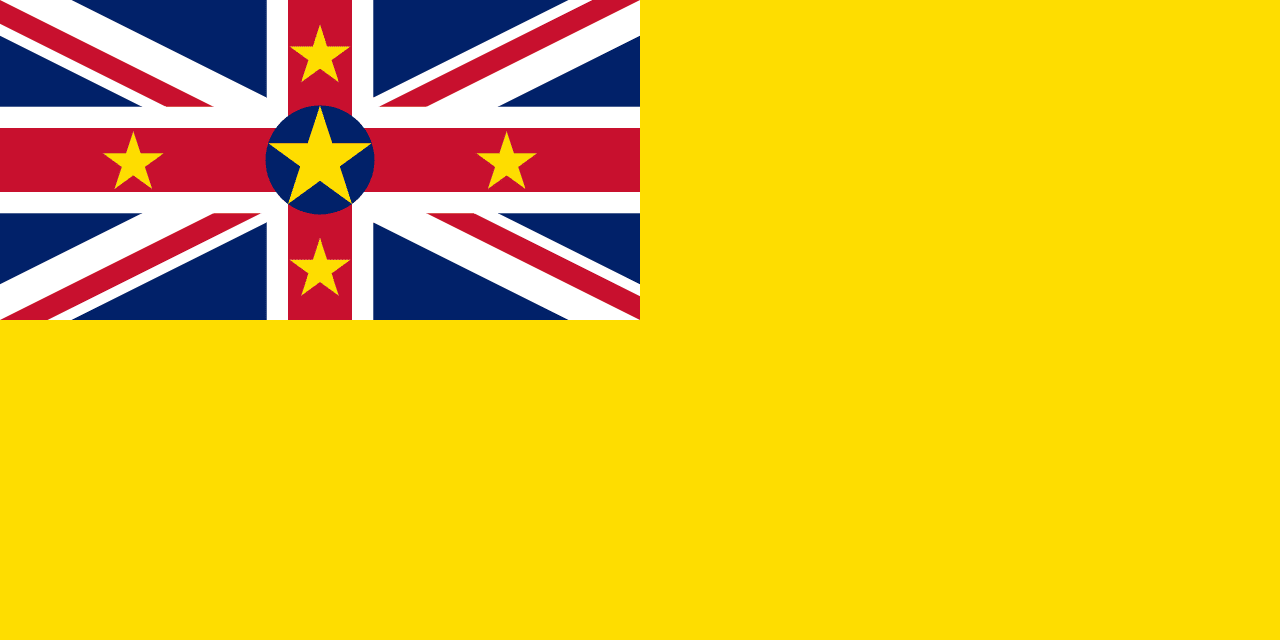La bandera de Níger presenta tres franjas horizontales de naranja, blanco y verde, con un círculo naranja centrado en la franja blanca. Este diseño llamativo refleja la geografía, la herencia cultural y las aspiraciones del país, convirtiéndola en un poderoso símbolo de la identidad y unidad nigerina.
Información sobre Níger
| Día Nacional de la Bandera | — |
| Estado soberano | Sí |
| Nombre oficial | República de Níger |
| Capital | Niamey |
| Población | 25,130,815 |
| Área | 1,267,000 km² |
| Moneda | Franco CFA de África Occidental (XOF) |
| Idioma | Francés, Hausa, Zarma, Songhay, Árabe |
| Continente | África |
| Región | África Occidental |
| Subregión | Sahel |
| Fronteras | Argelia, Benín, Burkina Faso, Chad, Libia, Malí, Nigeria |
| Zona horaria | Hora de África Occidental (WAT) UTC+1 |
| Código de llamada | +227 |
| Dominio de nivel superior | .ne |
Historia de la bandera de Níger
 La bandera de Níger fue adoptada oficialmente el 23 de noviembre de 1959, aproximadamente un año antes de que el país obtuviera la independencia total de Francia el 3 de agosto de 1960. El diseño se creó durante el período de transición hacia la independencia, reflejando la emergente identidad nacional de Níger y su visión para el futuro. La bandera ha permanecido sin cambios desde su adopción, simbolizando estabilidad y continuidad en la historia de la nación.
La bandera de Níger fue adoptada oficialmente el 23 de noviembre de 1959, aproximadamente un año antes de que el país obtuviera la independencia total de Francia el 3 de agosto de 1960. El diseño se creó durante el período de transición hacia la independencia, reflejando la emergente identidad nacional de Níger y su visión para el futuro. La bandera ha permanecido sin cambios desde su adopción, simbolizando estabilidad y continuidad en la historia de la nación.
Simbolismo y diseño de la bandera de Níger
Cada elemento de la bandera de Níger tiene un profundo significado simbólico:
- La franja naranja en la parte superior representa la parte norte de Níger, dominada por el desierto del Sahara. Simboliza la belleza y el desafío de esta región árida.
- La franja blanca en el medio simboliza la pureza, la inocencia y el brillante futuro que Níger aspira a lograr.
- La franja verde en la parte inferior representa las fértiles regiones del sur de Níger, donde la agricultura prospera a lo largo del valle del río Níger.
- El círculo naranja en el centro de la franja blanca representa el sol. Esto simboliza:
- El calor y el brillo del clima nigerino
- Una fuente de vida y esperanza para la nación
- El compromiso de Níger con la independencia y el progreso
Uso y significado de la bandera de Níger
 La bandera de Níger es una fuente de orgullo nacional y se exhibe prominentemente en todo el país. Ondean en edificios gubernamentales, escuelas y durante celebraciones nacionales como el Día de la Independencia el 3 de agosto. La bandera juega un papel crucial en fomentar un sentido de identidad y unidad nacional entre los diversos grupos étnicos de Níger. Internacionalmente, representa a Níger en eventos diplomáticos, reuniones de las Naciones Unidas y competiciones deportivas, simbolizando la soberanía del país y su lugar en la comunidad global.
La bandera de Níger es una fuente de orgullo nacional y se exhibe prominentemente en todo el país. Ondean en edificios gubernamentales, escuelas y durante celebraciones nacionales como el Día de la Independencia el 3 de agosto. La bandera juega un papel crucial en fomentar un sentido de identidad y unidad nacional entre los diversos grupos étnicos de Níger. Internacionalmente, representa a Níger en eventos diplomáticos, reuniones de las Naciones Unidas y competiciones deportivas, simbolizando la soberanía del país y su lugar en la comunidad global.
Datos interesantes sobre la bandera de Níger
- La bandera de Níger es similar a la bandera de India, pero con los colores en un orden diferente y un círculo naranja en lugar de una rueda azul.
- El color naranja en la bandera a veces se denomina "azafrán", vinculándolo a la especia que se ha comercializado a través del Sahara durante siglos.
- Níger es uno de los pocos países cuya bandera utiliza el naranja como color principal, lo que la hace bastante distintiva entre las banderas africanas.
- El diseño de la bandera refleja la posición de Níger como un país saheliano, que abarca el desierto del Sahara y las regiones más fértiles al sur.
- A pesar de los cambios en el gobierno y los sistemas políticos desde la independencia, la bandera ha permanecido como un símbolo constante de la identidad y unidad nigerina.





